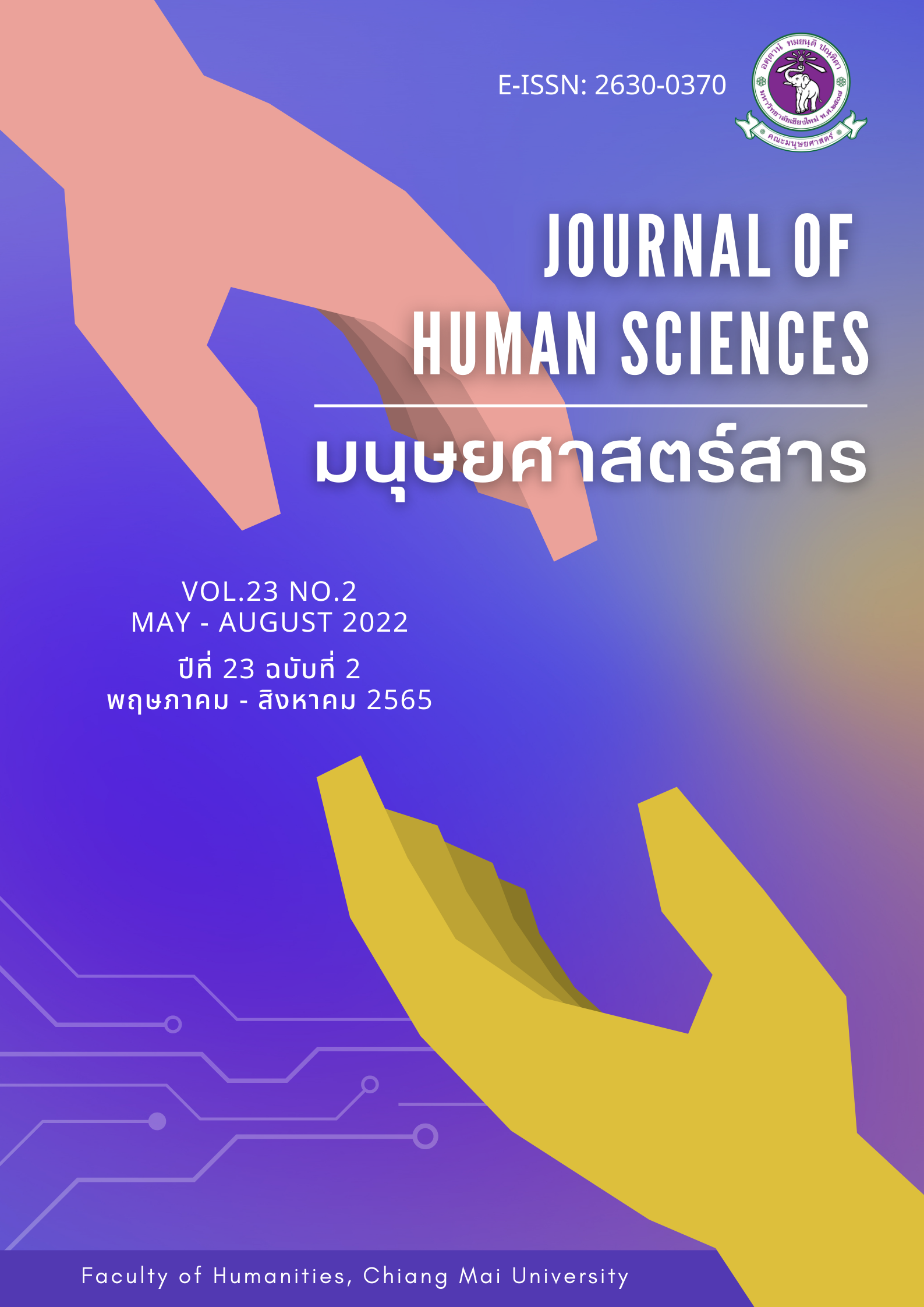การวิเคราะห์ผลทดสอบการฟังเสียง: การศึกษาเปรียบเทียบระหว่างการใช้คะแนนถูกผิดกับค่า d’
Main Article Content
บทคัดย่อ
ทฤษฎีตรวจจับสัญญาณ (Signal Detection Theory: SDT) เป็นทฤษฎีที่ใช้หลักการทางคณิตศาสตร์มาวิเคราะห์การตัดสินใจของมนุษย์ งานวิจัยด้านการฟังเสียงบางงานวิจัยได้นำแนวคิดของทฤษฎี SDT มาประยุกต์ใช้กับการวิเคราะห์ผลการทดสอบการฟัง อย่างไรก็ตาม จากการสำรวจงานวิจัยด้านการทดสอบการฟังเสียงพบว่า งานวิจัยบางงานเลือกใช้เพียงค่า d’ ซึ่งเป็นค่าที่คำนวณโดยอาศัยแนวคิดของ SDT และบางงานวิจัยใช้เพียงคะแนนถูกผิด จึงเกิดประเด็นคำถามว่า การใช้ค่า d’ กับคะแนนถูกผิด จะส่งผลต่อผลสรุปการวิเคราะห์การฟังหรือไม่ ผู้วิจัยได้ศึกษางานวิจัยที่ทดสอบการฟังเสียงจำนวน 7 งานวิจัยและนำผลคะแนนของทั้ง 7 งานวิจัยมาวิเคราะห์ค่า d’ และคะแนนถูกผิดเพื่อเปรียบเทียบว่าค่าทั้ง 2 ชนิดให้ผลที่แตกต่างกันหรือไม่ ผลการเปรียบเทียบพบว่าการใช้ค่าทั้ง 2 ชนิดนำไปสู่ข้อสรุปของการวิจัยที่ไม่แตกต่างกัน อย่างไรก็ตาม ข้อมูลจากการวิจัยครั้งนี้อาจยังไม่เพียงพอที่จะพิสูจน์ว่าการใช้ค่าทั้ง 2 ชนิดจะให้ผลลักษณะเดียวกันเสมอไป
Article Details

อนุญาตภายใต้เงื่อนไข Creative Commons Attribution-NonCommercial-NoDerivatives 4.0 International License.
เอกสารอ้างอิง
Christine, K. (1998). An investigation into the relatioship between speech perceptio and speech production in an experimental speech training program for children with hearing loss. [Doctoral dissertation, The City University of New York].
Holderman, G. (2015). The accuracy of the Spanish Words in Noise (S-WIN) speech perception test in bilingual populations. [Bachelor of Arts thesis, University of Florida].
Huang, Y., & Ferreira, F. (2020). The application of Signal Detection Theory to acceptability judgments. Frontiers in Psychology, 31, 1-11. https://doi.org/https://doi.org/10.3389/fpsyg.2020.00073
Iverson, P., Kuhl, P., K, Akahane-Yamada, R., Diesch, E., Tohkura, Y., Kettermann, A., & Siebert, C. (2003). A perceptual interference account of acquisition difficulties for non-native phonemes. Cognition, 87, b47-b57.
Iversona, P., & Kuhl, P., K. (1995). Mapping the perceptual magnet effect for speech using signal detection theory and multidimensional scaling. Journal of Acoustical Aociety of America, 97(1), 553-62.
Li, Y. (2015). Audio-visual training effect on L2 perception and production of English /θ/-/s/ and /ð/-/z/ by Mandarin speakers. [Doctoral, dissertation, Newcastal University].
Macmillan, N., A. (2002). Signal Dection Theory. In J. Wixed (Ed.), Stevens' Handbook of Experimental Psychology (3rd ed., Vol. 4). John Wiley & Sons, Inc.
Macmillan, N., A, & Creelman, C., Douglas. (2005). Detection Theory: A User's Guide (2nd ed.). Lawrence Erlbaum Associates Publishers.
McNicol, D. (1972). A Primer of Signal Detection Theory. Australasian Publishing.
Moseley, P., Smailes, D., Ellison, A., & Fernyhough, C. (2016). The effect of auditory verbal imagery on signal detection in hallucination-prone individuals. Cognition, 146, 206–216.
Pastore, R., E, & Scheirer, C., J. (1974). Signal Detection Theory: considerations for general application. Psychological Bulletin, 81(12), 945-958.
Phillips, V., L, Saks, M., J, & Peterson, J., L. (2001). The application of signal detection theory to decision-making in forensic science. Journal of Forensic Sciences, 46(2), 294-308.
Phuangcharoen, W. (1993). Speech perception ability of the persons who loss the high frequency. [Doctoral dissertation, Mahidol University].
Rader, T., Adel, Y., Fastl, H., & Baumann, U. (2015). Speech perception with combined electric-acoustic stimulation: a simulation and model comparison. Ear and hearing, 36(6), e314-325.
Sirikanerat, T. (2017). The effect of F0 variation on the learning of Japanese pitch accent: a case study of Chinese speakers. [Doctoral disseration, Tohoku University]. Tohoku University Repository. https://tohoku.repo.nii.ac.jp/?action=pages_view_main&active_action=repository_view_main_item_detail&item_id=124353&item_no=1&page_id=33&block_id=46.
Sirikanerat, T. & Sugaya, N. (2014). The effect of pitch variation in Japanese pitch accent on L2 learners: A pilot study. Proceedings of the 28th General Meeting of The Phonetic Society of Japan, Tokyo University of Agriculture and Technology Koganei Campus, Tokyo, 27-28 September (pp. 111-116).
Sirikanerat, T. & Sugaya, N. (2016). Difficulties in the perception of Japanese pitch accent by Thai learners using discrimination paradigm: The effects of accent type and multi-talker variation (in Japanese). Bulletin of Institute for Excellence in Higher Education, Tohoku University, 63-74.
Strange, W., & Shafer, V., L. (2008). Speech perception in second language learners: the re-education of selective perception. In J. G. H. Edwards & M. L. Zampini (Eds.), Phonology and Second Language Acquisition. John Benjamins Publishing.


